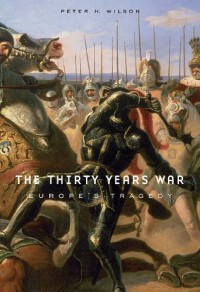A fantastic history of a complex war

Peter Wilson's book is about more than the war that consumed central Europe in the 17th century. To adequately explain the factors that led up to it and influenced its outcome, he describes the context of politics and government in the Holy Roman Empire. This vast, unwieldy, and yet surprisingly effective institution was at the center of the struggle, as Protestants and Catholics struggle to coexist within it in the years following the Peace of Augsburg in 1555. Fragile as it was, this peace was strained by the efforts of successive Habsburg emperors to strengthen their power within the empire, an effort that fueled Protestant anxieties that the Habsburgs would use this power to advance the Catholic faith at their expense.
Yet Wilson makes a persuasive argument that the war was more about politics than religion. Though confessional issues sparked the initial outbreak, the war often led to cross-confessional alliances that set co-religionists against each other. Here Wilson builds upon his extensive discussion of prewar politics to highlight the dynastic ambitions of people like Frederick V of Palatine and Maximilian of Bavaria and their efforts to use the war to advance their interests. Nobody exemplified this better than Gustavus Adolphus, the Swedish king whose intervention reversed the string of Imperial victories. Though his death deprived the rebels of their greatest leader, the war dragged on thanks to the support provided by the French, whose rise to European dominance coincided with the conflict.
All of this is described in an elaborate narrative designed to give the reader an understanding of the factors at work in the conflict and how the war turned out the way it did. The text is dense with the names of people and locations, yet this helps convey the considerable complexity of events. Simply put, this is the best history of the war available, and with remain the definitive source for anyone interested in the conflict for years to come.






